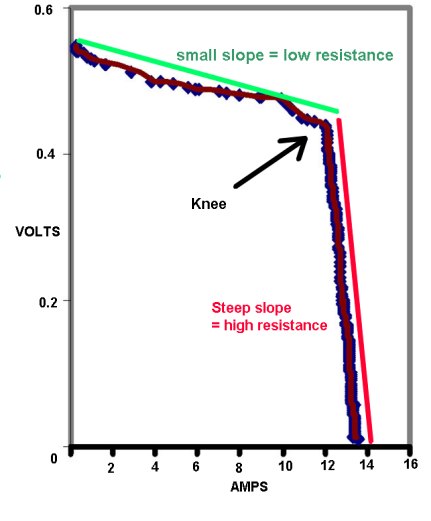Imagine to model a solar cell as a power supply \$V_p\$ in series with an internal resistance \$R_p\$. This solar cell is connected to a variable load resistance \$R_{load}\$.
Suppose that I keep the solar cell at fixed distance from a fixed light source (say, a light bulb). The power incident on the solar cell should be a constant, as the distance or the source do not change.
Now I change the value of \$R_{load}\$ many times and every time I measure the current \$I\$ flowing in \$R_{load}\$ and the voltage across load, \$V_{load}\$.
Before taking all the measurements I measure, one time only (as it should be a constant), the voltage across the cell once I disconnected the load \$V_{open \, circuit}\$: that should be \$V_p\$ and it should not change, as said.
I tried all this procedure experimentally but I noticed one strange thing: Every time I calculated \$R_p\$ as $$R_p=\frac{V_{open \, circuit}-V_{load}}{I}$$ and I noticed that \$R_p\$ changed while \$R_{load}\$ was being varied! \$R_p\$ decreased as \$R_{load}\$ increased!
Is there an explanation for that?
The most strange thing is that, since we are at constant distance and source \$P_{incident}\$ is constant and we have \$P_{produced}=\frac{V^2_p}{R_p}=\eta P_{incident}\$, where \$\eta\$ is the efficiency: if both \$\eta\$ and \$V_p\$ are constant, \$R_p\$ should be a constant too!!
Therefore, is it wrong to assume that \$V_p\$ is a constant? Or maybe is just \$\eta\$ changing?

